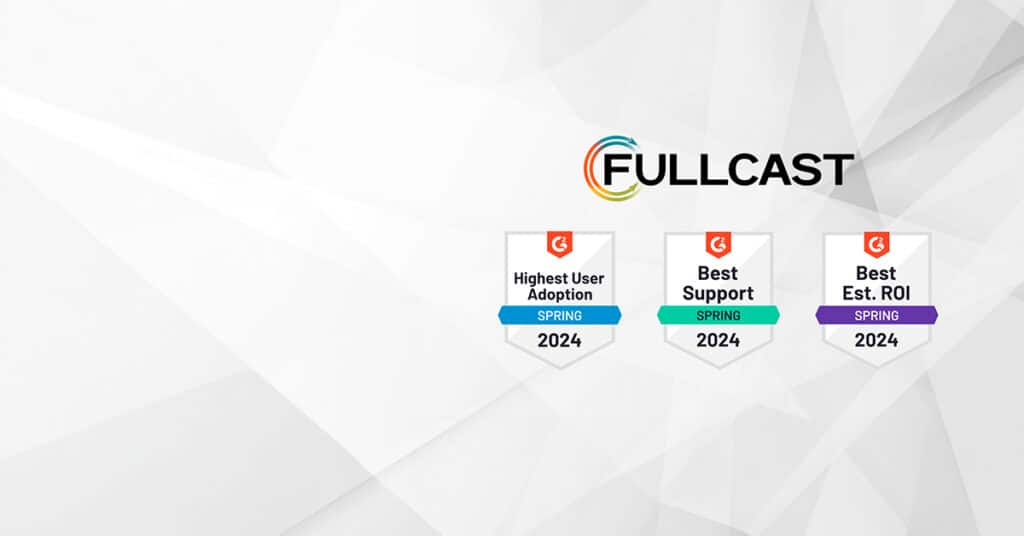Your GTM Plan is Interconnected…and Volatile
GTM Planning is a complex and interconnected process. There is no one monolithic GTM Plan because each plan needs to fully incorporate different elements such as:
- Markets (segments and territories)
- People (roles, coverage, and hiring plans)
- Products (SKUs, features, P&L)
- Channels (partners, revenue sharings goals, etc)
- Corporate goals and limitations (targets, budgets, profit goals etc)
As a result, most planning processes involve many different people and departments working on different aspects of the plan. As they build out their individual planning spreadsheets, the total number of spreadsheets can balloon to hundreds.
Because all of the elements of the plan are interconnected, it can be impossible to be agile. Small problems in one area of the plan can quickly snowball out of control, especially in a spreadsheet-driven process. For example,
- Changes in your territory segmentation will affect your quota model
- Delays in hiring impact coverage models and quarterly sales targets
- An underperforming channel can impact product targets that are specific to that channel
These types of issues are the daily reality of a go-to-market organization. Yet, because of the operational challenge of making these changes, it may be tempting to set your plan annually and then check back at the end of the year to see how you did. Unfortunately most organizations that take that approach will struggle to survive.
The reality is that change is constant. The assumptions upon which each element of the plan is based can be incredibly volatile. They may be impacted by outside factors such as market changes, competition, or economic conditions. For example, the last few years have proven these market conditions can change quite dramatically in a short time, such as with a global pandemic or recession.
Internal factors such as business performance can also impact your plan. If you have a blowout quarter you may need to hire 50 new sales reps while a lagging business may necessitate other GTM changes.
Your plan assumptions may also be impacted by the lead time to affect change. For example, you may have built assumptions about hiring and ramp time into your plan, but volatility due to labor shortages or the effectiveness of your recruiting team may impact your ability to make changes quickly.
In the face of all this volatility, most teams end up plugging gaps and firefighting throughout the year. However, Continuous GTM Planning offers a better way forward.
What is Continuous GTM Planning?
Continuous GTM Planning allows RevOps teams to operate with agility. Continuous Planning is the ability of an organization to:
- Respond in a timely manner
- To internal and external factors
- By building and adjusting the plan; and
- To execute that plan
- With the goal of maximizing ROI
Built correctly, a Continuous Plan enables you to proactively change one variable of your plan and automatically update all of the interconnected elements. It lessens the annual planning burden. For example:
Many teams undertake tremendous data cleaning projects to prepare for the annual planning exercise. However, this data gets stale over the 3 month planning. With continuous planning, there is less pressure to “get the data 100% right” during planning (which isn’t possible anyway), since the on-going planning motion allows for data to be refreshed and re-factored into the plan at any point during the year.
Accurate coverage models, hiring timelines, and productivity profiles impact the organization’s ability to execute on the GTM plan. However, as any sales manager will tell you, hiring timelines almost never go as planned. Being able to adjust hiring plans to the reality of the market and keep an eye on the impact lessens the potential for overhiring and gives
One of the most significant benefits of Continuous Planning is the ability to execute the plan. Although many teams know how to model and build their plan successfully they fail to be able to deploy it quickly. For example, when changes occur it can take six weeks to update routing or dashboards, stalling all of the team’s momentum. Continuous Planning enables not just effective planning but also the ability to actually realize the plan.
Similar to how DevOps changed the software development world and enabled development teams to deliver value faster, at higher quality, these same benefits are realized by RevOps teams who follow the principles of Continuous Planning. They are able to operate at a high level of agility that improves operational efficiency. They can respond quickly to changing market conditions and capture opportunities faster than their competitors.
How to Implement Continuous GTM Planning
It is nearly impossible to implement Continuous Planning with a spreadsheet-driven process, especially as your organization scales. Today there are GTM Planning Platforms, like Fullcast, that enable you to carry out the functions of GTM planning with ease and efficiency. When looking for software to support your Continuous Planning goals, the following functionality is essential.
Modeling Capabilities
In most cases, your leadership team will ask for several different plans – worst case, best case, and somewhere in the middle. This takes forever when you are using spreadsheets. A modeling platform is essential to help you build out different scenarios and decide which are best. A good modeling platform also saves a ton of time because it will enable you to clone an existing plan and quickly adjust it.
A modeling platform also becomes your system of record for the plan. If anyone wants to know what the plan is, instead of sorting through tens (or hundreds!) of spreadsheets, they can quickly access it via the system of record. The best modeling platforms allow for centralized collaboration and self-service, where sales managers or any of the other myriad roles involved in the planning process can not only view the most up-to-date version of the plan but also make changes themselves.
In this way, Continuous Planning democratizes the planning process. Control can be easily transferred to Sales Managers or others who have the most insight. They no longer have to ask Ops a million questions when they can easily make updates and immediately see the impact of any changes. This frees the Ops team from having to be involved in every little detail, enabling them to focus on other more strategic and value-added tasks.
There are many corporate planning tools on the market today, like Anaplan or Adaptive Insights, that have modeling capabilities and that many that organizations will attempt to use for Continuous Planning. However, these tools are essentially giant spreadsheets on steroids and are not designed specifically for Continuous Planning. Although literally anything can be custom-coded, these tools lack out-of-the-box Continuous Planning functionality like integrated planning and agile deployment.
Real-Time Tracking of Performance to Plan
Successful Continuous Planning requires that planning tools sync with transactional systems like CRM or HR systems. The data in your CRM is constantly changing. If your process involves pulling data from your CRM into spreadsheets, you are creating a point-in-time plan that may or may not be based on the most current reality. For example, If you pull data about your accounts from the CRM in September and use this data to build a plan that you launch in December, it may already be several months out of date by the time it is launched. Alternatively, if you are able to incorporate feedback from transactional systems in real-time, your plan will better reflect reality and enable you to spot and respond to issues and opportunities immediately.
Integrated Planning Capabilities
As discussed, changing one element of your plan will impact another. For example, when territories change it has a downstream impact on other functions like routing or quotas and compensation. When planning is not integrated, it is not unusual for routing to be inaccurate or for quota and compensation teams to be surprised by commission inaccuracies at the end of each month. Problems arise because handshake deals or other changes are made that are not recorded in a system of record.
Integrated planning gives you a system of record for your plan. It enables you to make changes to one element of the plan which then automatically optimizes the other elements of the plan. For example, when territories change, the system automatically updates lead routing to reflect those changes without any intervention required on the part of the Ops team. When a sales rep leaves mid quarter, this information is automatically updated in quota or commissioning systems for accurate crediting.
Seamless Deployment
Your plan is only as good as how quickly you can release it into your CRM or HRIS systems, especially when you need to respond rapidly to changing market conditions. Getting rid of spreadsheets is a first solid step toward deployment agility. But what do you do next?
Consider that having too many tools slows deployment. If your organization has a tool for routing, a tool for holdouts, or even a lot of custom code in Salesforce, it is difficult to respond with agility. When IT support is needed, it is not uncommon to get push back (e.g, “come back in 4-6 weeks”) because they have limited resources and broad responsibilities across the organization. In the meantime, this leads to manual workarounds and chaos. A GTM Planning platform that automates the integration of the different planning and execution functions will significantly ease the deployment burden.
Another common problem that impacts deployment is bad data. Bad data encompasses not just leads and account data, but also incorrect roles, hiring and termination dates, and assignments. To deal with this scourge, look for solutions that enable you to create policies and workflows that manage data hygiene. For example, if you can set rules to automatically update roles, dedupe accounts, or identify when an account is missing certain data, you will smooth your plan’s deployment and be able to easily make ongoing updates.
Parameterized Workflows
RevOps teams manage numerous workflows, from routing to holdouts. One of the key obstacles to Continuous Planning is when the GTM plan is built into these workflows. A common example is when postal codes or seller names are coded into routing workflows. These workflows are extremely difficult to change if your GTM changes, in many cases requiring IT resources or a Salesforce consultant to hardcode the changes.
A better way is to parameterize GTM rules into your workflows so that they can easily adapt to your changing GTM. When your GTM changes, you can easily change the rules without needing to change your workflows. Look for GTM Planning platforms that enable users to set up any number of rules (aka policies) that are consumed by CRM workflows. This enables your team to change aspects of the GTM in an agile manner.
Conclusion
The reality in most organizations is that they do tweak their GTM plan throughout the year. They shift territories or resources or channels. However, without a dedicated platform and process, these tweaks are ad hoc and untrackable. If the numbers set during annual planning remain the same but all the inputs change, there is no predictable or reliable way to deliver on the plan. Instead, adopting a Continuous Planning approach and equipping your team with the tools to execute allows the plan inputs to be tweaked in a measured way, with an accurate view on the impact to top line numbers. This approach allows your team to course correct in real-time so that any plan drift or any threats to targets can be addressed quickly.











